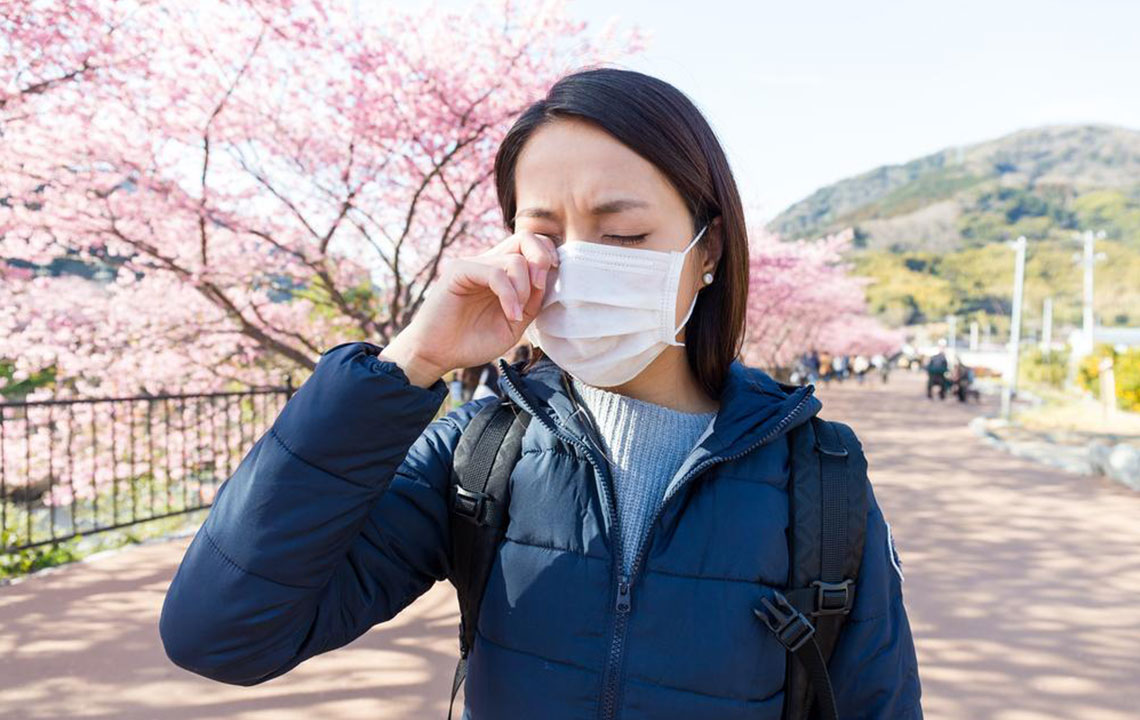Causes, Symptoms and Treatment of Pollen Allergies
While a majority of people look forward to spring and all its colorful flowers, others run around shutting their doors and windows the moment these flowers start blooming. Why? Because with flowers comes pollen and pollen allergies. Pollen Allergy is one of the most common allergies to affect people around the world.

Causes of pollen allergies
Pollen can be described as a very fine powder or dust that is produced by flowers, grasses, weeds, and trees. Though plants need pollen to propagate, inhaling this pollen can make people start sneezing uncontrollably or give rise to other adverse reactions. This is because the immune system recognizes pollen to be an intruder and releases chemicals to fight against it.
Common types of pollen allergies
Almost every plant and tree produces pollen, but some types of pollen are more likely to trigger an allergic reaction as compared to others. Some of the common types of pollen that make people experience signs of pollen allergies are:
Birch pollen – Pollen from birch tree is one of the most common airborne allergens. Up to five million pollen grains can be released by one birch tree when it is in bloom. These particles are carried by the winds and can travel for up to 100 yards from the tree they are released from.
Oak pollen – Oak trees are known to release pollen from March to May. This pollen release is more concentrated in early mornings. Though it is considered milder than other forms of pollen, it can stay airborne for longer.
Grass pollen – Even grass releases pollen that can cause allergic reactions. This is seen mostly during the summer. Apart from breathing in this type of pollen, people may also experience signs of pollen allergies by coming in direct contact with grass.
Ragweed – 17 different types of ragweed grow in the US, and they release pollen from the months of August to November. However, depending on where it is growing, pollinations could start as early as July. This type of pollen is responsible for a large percentage of pollen allergies. Since it can travel thousands of miles and has the ability to survive a mild winter, allergies caused by this type of pollen can be seen for longer durations as compared to some of the other types of pollen.
Signs of pollen allergies
Some of the common signs and symptoms of pollen allergies are:
- Runny nose
- Sneezing
- Congestion in the nose
- Pressure in the sinus
- Coughing
- Scratching sensation in the throat
- Diminished sense of taste and smell
- Swelling of the skin around the eyes
- Skin around the eyes turns blueish
- Aggravated asthmatic reactions
How to diagnose a pollen allergy?
Once you begin to experience any of the above signs of pollen allergies, you must consult a doctor to determine whether or not you are allergic to pollen. An allergen test will help the doctor determine a diagnosis of your case. This involves pricking different areas on your skin and inserting a small amount of different allergens into these areas. A change in color of your skin, swelling or itchiness in the area will determine if you are allergic to the substance that was introduced to that part of your skin.
How to treat pollen allergies?
The best way to minimize the effect of pollen allergies is to keep away from pollen that could be causing signs of pollen allergies.However, it is often impossible to avoid pollen. Here are some tips to minimize your exposure to pollen:
- Stay indoors early in the morning.
- Stay indoors on windy days.
- Check the weather before moving out and stay indoors on high pollen days.
- Keep the windows and doors closed during pollen season.
- Wear a dust mask and sunglasses while going outdoors.
- Run the air conditioner with a HEPA filter.
- Vacuum the house regularly.
- Use a dryer to dry clothes rather than letting them air dry outdoors.
- In addition to this, medication and allergy shots can also help minimize the effect of pollen allergies. Medication for such allergies is usually available over the counter in the form of anti-histamines and decongestants. Allergy shots need to be taken every few weeks to get the body used to the allergen. This may not have immediate results but helps reduce the allergy in the long run. In some cases, prescription drugs may also be necessary.
One of the biggest differences between common flu and pollen allergies is that these will recur around the same time every year. So if you find yourself sneezing uncontrollably every September, consult a doctor at the earliest.


